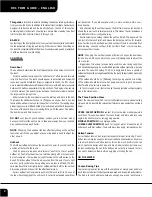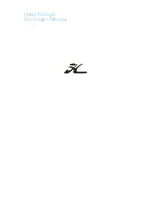
Page 24
24.0 – Trailering and Storage
Remember these important guidelines while using your catamaran:
•
Always use trailers and beach dollies with cradles designed to fit the
hulls rather than single rollers.
•
Always remove dagger boards, blocks and rigging when trailering.
For long distances removal of the rudders and steering system is
recommended. For short traveling distances be sure to secure the
tiller tie bar so the system cannot turn. Also be sure to secure the
rudders in the up position so they cannot be lowered accidentally
while trailering. It is recommended that the rudder systems be
removed prior to trailering in anything but a very short distance.
•
Tie the boat down snuggly using straps or Tie down lines. Be aware
that tying down the boat too tight can result in hull damage. Do not
use the dolphin striker for a tie down point or for pulling the boat.
Use the main beam instead.
•
Secure both ends of the mast. Be sure to have a red flag attached
to the aft end of the mast.
•
To protect against rocks, gravel and road debris, boat covers are
recommended. They also provide protection from the weather and
the elements.
•
Mooring of your boat is not recommended.
•
Always leave the drain plugs and inspection ports open to avoid the
build up of air pressure and causing hull damage when not sailing.
25.0 - Design Category
Design category “D” Inland coast or protected waters.
The “Blade” F16 is designed to the F16 class association rules for racing and is set
up as a race boat exempt status.
Specific Information
This catamaran is capable of supporting the crew even when swamped. The
Catamaran is also intended to be recovered by the crew after capsize. The F16
rules do not dictate a minimum crew weight for racing. There is a minimum crew
eight for righting the boat after a capsize. This will vary on the conditions of the
capsize. Be familiar with your boat and your capabilities and carry the proper
equipment, righting bags or otherwise, anytime you leave the beach.
Warning
Caution
Caution: Always check for overhead wires when raising or lowering the
mast. Contact with electrical power lines can cause serious injury or death.
Caution


































